This article explores various types of raft foundations, their unique features, and their suitability for specific applications.
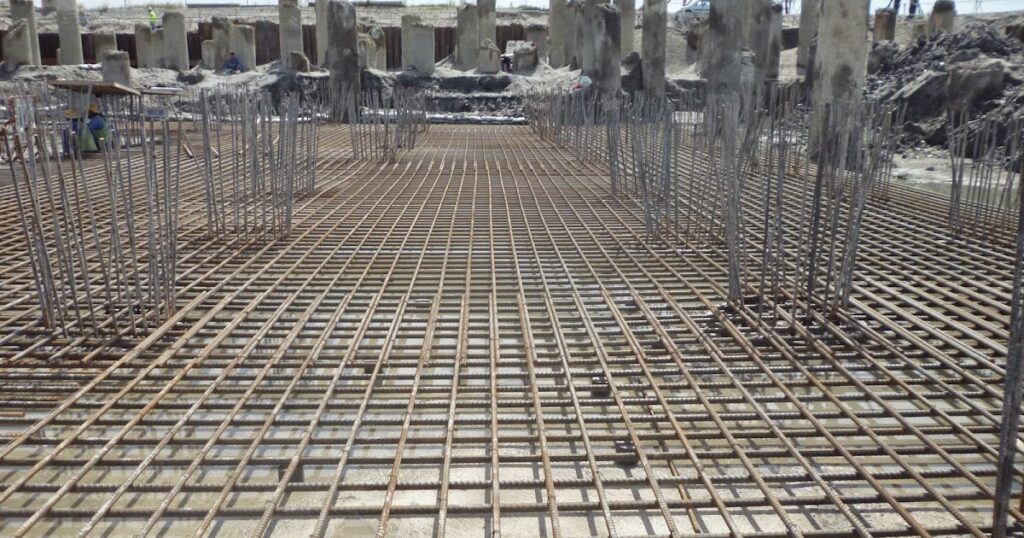
Raft foundations, also known as mat foundations, are a key solution for structures where surface soil conditions are weak or unsuitable for traditional shallow foundations. Unlike individual footings or pile groups, raft foundations distribute structural loads across a large area, significantly reducing soil pressure beneath the structure. This ensures stability even in challenging geotechnical conditions.
Raft foundations are commonly used when bearing strata are too deep for traditional spread footings or when the soil strength diminishes with depth. They are also ideal for situations where differential settlement must be minimized, such as large building footprints or uneven soil conditions. Their design spreads the load over the building’s entire footprint, maintaining contact bearing stresses within acceptable limits.
This article explores various types of raft foundations, their unique features, and their suitability for specific applications. An understanding of the distinctions between these types, allows engineers to choose the most appropriate foundation system for their projects.
Types of Raft Foundations
Nominal Crust Raft
The nominal crust raft is the simplest type of raft foundation, used in situations where ground conditions are reasonable and structural loads are light. It consists of a reinforced concrete flat slab with thickened areas around columns and slab edges for added strength.
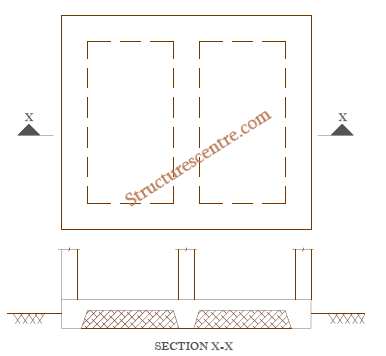
This type of raft acts as a surface crust to the substrata, evening out any localized differential settlement caused by soil variations or uneven applied loads. Nominal crust rafts are typically sized based on engineering judgment or empirical data, making them a cost-effective solution for small-scale or low-rise structures.
2. Crust Raft
A crust raft is a sturdier version of the nominal crust raft, designed for heavier loads and soils with low bearing capacity. The design integrates the slab and thickened areas into a unified structure, providing greater stiffness and load-carrying capacity.
Crust rafts are well-suited for sites with level ground and moderate geotechnical challenges. Their increased thickness allows them to manage higher forces and control differential settlement more effectively than nominal crust rafts. However, the sizing of crust rafts often requires careful calculation and engineering expertise.
3. Blanket Raft
The blanket raft builds upon the crust raft design by incorporating a stone blanket beneath the concrete slab. The stone blanket spans localized soft spots or depressions, dispersing point and edge loads more evenly. This makes blanket rafts particularly effective for swampy areas or soils with variable strata.
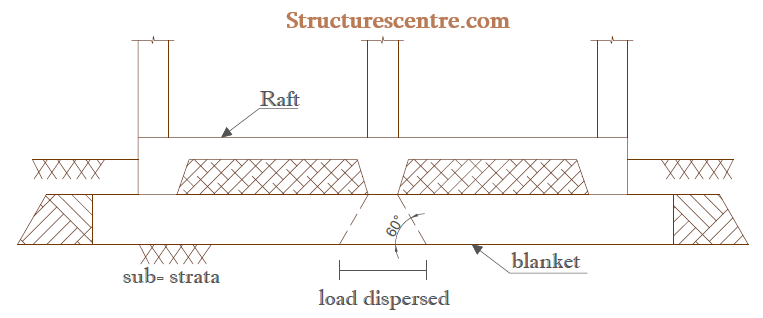
This foundation type is often used for low-rise developments where soil improvement methods like piling or vibro-compaction are impractical or cost-prohibitive. The combined action of the concrete raft and the stone blanket enhances stability and minimizes settlement.
4. Slip-Plane Raft
Slip-plane rafts consist of a concrete slab constructed over a slip-plane layer, such as sand with known frictional properties. The slip-plane layer creates a controlled failure plane, preventing excessive ground strains from being transferred to the structure.

This type of raft is commonly used in areas prone to ground subsidence, such as mining zones. By designing the slip-plane to rupture under predetermined forces, engineers can limit the impact of subsurface movements, protecting the structure from damage.
5. Beam Strip Raft
Beam strip rafts use ground-bearing beams arranged in two or more directions to support concentrated structural loads. The beams are tied together by a slab resting on compacted hardcore or lateritic fillings, creating a composite structure that resists lateral distortions.

These rafts are suitable for heavy loads and are designed with separate beam and slab elements that are combined in the final structural analysis. The beam strip raft’s stiffness makes it a popular choice for industrial buildings or structures with high load concentrations.
6. Cellular Raft
A cellular raft (Figure 5) consists of interlocking foundation beams arranged in a grid, with a ground-bearing slab at the base and a suspended slab at the top. This configuration creates voids within the raft, reducing its weight and increasing its stiffness.
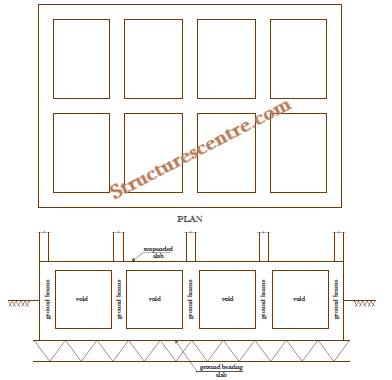
Cellular rafts are ideal for heavily loaded structures on weak soils. Removing the overburden soil enhances bearing capacity, while the voids can serve as storage, living spaces, or service installations. However, these rafts are expensive and engineers typically reserve them for projects in mining zones or earthquake-prone regions.
See: Designing a Cellular Raft Foundation
7. Lidded Cellular Raft
The lidded cellular raft is a variation of the cellular raft, featuring a lighter upper slab that is separate from the main foundation (Figure 6). This design offers flexibility, as the upper slab can be re-leveled in case of tilting or distortion.
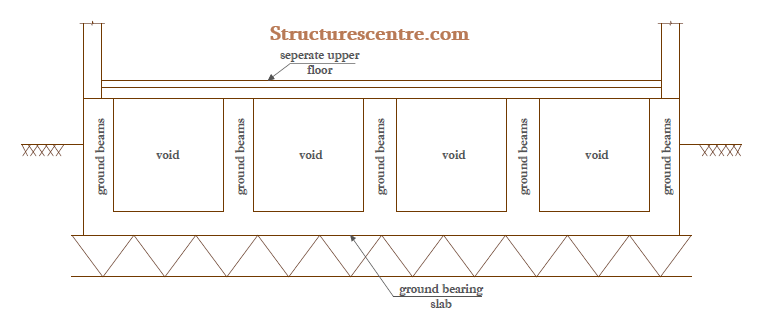
The lidded cellular raft is less stiff than the pure cellular raft due to its lightweight construction. It is often used in projects where re-leveling or floor adjustments are anticipated during the structure’s lifespan.
8. Buoyancy Raft
A buoyancy raft is a specialized type of cellular raft with large, deep voids (Figure 7). It provides stability for heavily loaded structures in areas with extremely poor soil bearing capacity. The voids reduce the raft’s weight, creating a “buoyant” effect that minimizes soil stress.
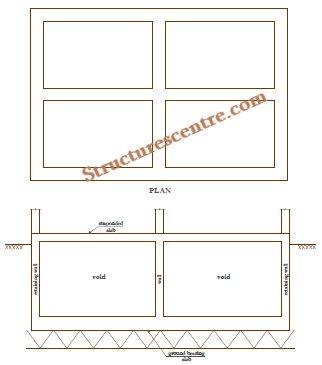
Engineers rarely use buoyancy rafts due to their high construction costs, opting for them only when alternative solutions are impractical or more expensive. Engineers often implement buoyancy rafts in regions with deep weak soils or when additional basement accommodation is required.
9. Jacking Raft
A jacking raft incorporates design features to resist the forces and moments associated with re-leveling. Engineers can design these rafts in any type (crust, beam strip, cellular, etc.), but they specifically engineer them to accommodate jacking operations
Jacking rafts are particularly useful in areas prone to significant subsidence or ground movement. They provide a practical and cost-effective solution for maintaining structural integrity in unpredictable geotechnical conditions.
Summary
Raft foundations offer a versatile range of solutions for structures with challenging soil conditions. Each type of raft foundation addresses specific requirements, ranging from lightweight nominal crust rafts for small buildings to robust buoyancy rafts for heavily loaded structures on poor soils.
The choice of raft foundation depends on factors like soil properties, structural loads, and project budget. By understanding the unique features and applications of each type, engineers can design foundations that ensure safety, stability, and cost efficiency.
Sources & Citations
- Bowles, J. E. (1996). Foundation Analysis and Design. McGraw-Hill.
- Tomlinson, M., & Woodward, J. (2008). Foundation Design and Construction. Pearson Education.